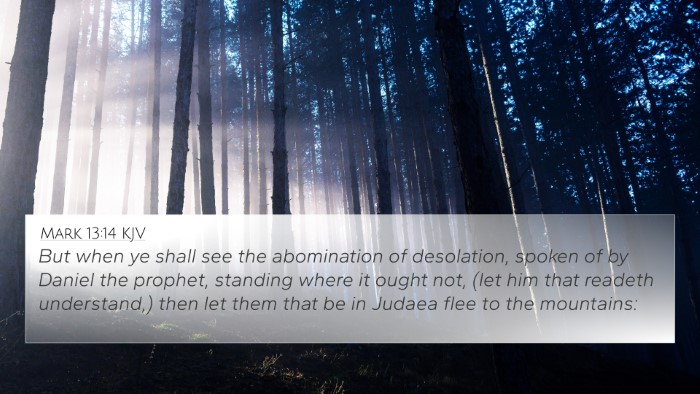Understanding Jeremiah 35:11
Jeremiah 35:11 speaks to the resilience and faithfulness of the Rechabites, a group of nomadic people who adhered strictly to the commands given by their forefather, Jonadab. In this verse, they are confronted by the prophet Jeremiah and make a declaration of their commitment to the way prescribed by Jonadab. The themes of obedience, legacy, and spiritual integrity are woven throughout this scripture.
Insights from Commentaries
-
Matthew Henry's Commentary:
Matthew Henry highlights the contrast between the Rechabites' adherence to their father’s commands and the general disobedience of the people of Judah towards God’s commandments. He points out that the Rechabites serve as a living example of faithfulness and contrasts sharply with the waywardness seen in Israel. Their loyalty illustrates the blessings of maintaining the legacy of obedience.
-
Albert Barnes' Notes:
Albert Barnes emphasizes the significance of the Rechabites' vow and their refusal to drink wine or live in cities as a testament to their dedication to their forefather’s instructions. This commitment to abstaining from societal norms highlights their desire to remain distinct and devoted, setting an example of spiritual discipline. Barnes draws attention to the implications of familial obedience and the strength found in following divine instruction.
-
Adam Clarke's Commentary:
Adam Clarke underscores the historical context of the Rechabites and relates their abstinence to a broader call for separation from worldly influences. Clarke discusses how their actions reflect a deeper message about the importance of adhering to divine principles in a society that often fails to uphold such values. He reinforces the notion that obedience to God’s word, as well as the teachings passed down through generations, is paramount.
Thematic Connections and Cross-References
The examination of Jeremiah 35:11 opens up a landscape of thematic connections within the Bible. It encourages readers to explore various verses that share similar messages about obedience, faithfulness, discipline, and the importance of adhering to divine commandments. Below are key cross-references that provide insight into the thematic elements of this verse.
- 1 Chronicles 2:55: Describes the Kenites, related to the Rechabites, emphasizing their lineage and faithfulness.
- Exodus 20:12: Honors the commandment concerning the respect for parents, reflecting the importance of legacy.
- Proverbs 1:8-9: Advises on the importance of listening to the instruction of parents.
- Matthew 10:37: Jesus speaks about the cost of discipleship, resonating with the Rechabites' commitment.
- James 1:22: Calls believers to be doers of the word, echoing the theme of active obedience.
- Romans 12:2: Teaches about not conforming to the world, similar to the Rechabites' rejection of societal norms.
- Hebrews 11:4: Mentions Abel’s faith, paralleling the Rechabites’ devotion over generational choices.
Explaining the Importance of Cross-Referencing
Cross-referencing is a vital tool for deepening one's understanding of scripture, revealing connections between Biblical texts that may not be immediately evident. Through comparative Bible verse analysis, readers can identify thematic patterns and doctrinal teachings that span both the Old and New Testaments. Utilizing resources such as a Bible concordance or cross-reference Bible study guide can significantly enhance one’s Biblical study experience.
Why Cross-Referencing Matters:
- Establishes a comprehensive view of Biblical themes.
- Enhances the understanding of scripture through inter-Biblical dialogue.
- Encourages holistic interpretations of the Biblical text.
- Facilitates sermon preparation and teaching applications.
Practical Tools for Cross-Referencing
For those looking to delve deeper into scripture understanding, several effective tools can aid in this endeavor:
- Bible Concordance: An invaluable resource for locating specific verses and their connections across the Bible.
- Online Bible Study Tools: Websites and applications that offer interactive cross-reference features.
- Commentaries: Utilize public domain commentaries to gain additional perspectives on specific verses.
- Study Bibles: Editions of the Bible that include notes and cross-references within the text itself.








